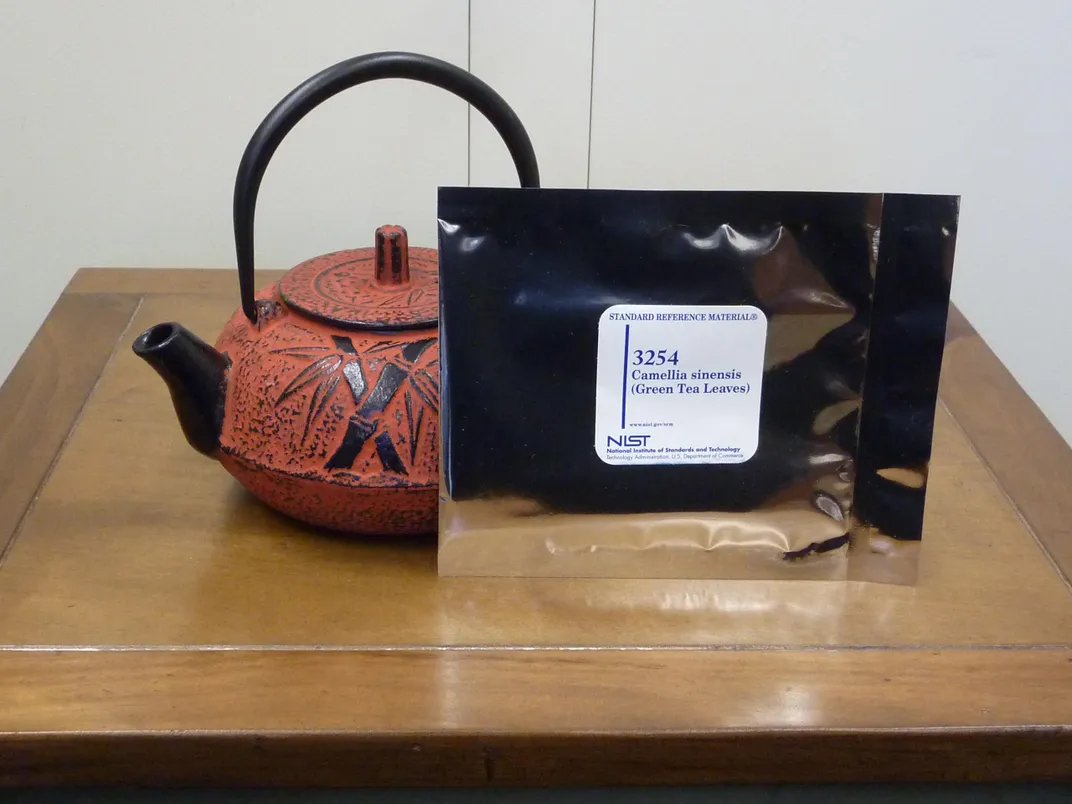The Weird World of Standard Reference Materials, From Peanut Butter to Whale Blubber
Get the full story behind a $761 jar of peanut butter and other exorbitantly priced everyday objects used by scientists
/https://tf-cmsv2-smithsonianmag-media.s3.amazonaws.com/filer/f7/d4/f7d474ac-5e97-43f7-8c25-37ab6b8e37e9/42-23974883.jpg)
In mid-February, a photo of a $761 jar of peanut butter began making rounds on the Internet. As food bloggers noted, the savory paste is not laced with caviar or truffles, and its lid isn't made of gold. This particular jar of peanut butter doesn’t represent the pinnacle of perfection, either. It contains a perfectly ordinary—if slightly bland—batch of America’s favorite spread.
The peanut butter’s exceptional price tag is linked to what it represents. Sold by the National Institute of Standards and Technology (NIST) in Maryland, the peanut butter is just one of around 1,400 standard reference materials, or SRMs, available to scientists, governmental regulatory agencies and manufacturers around the world.
Stephen Wise, program coordinator for food and nutrition in the chemical sciences division of NIST, oversaw the peanut butter’s creation. “It’s just a homogenous material that everyone can analyze and hopefully get the same answer that we’ve established with it,” he says.
In addition to peanut butter, SRMs run the gamut of possible substances, each one priced in a similarly eye-popping fashion. For instance, the current NIST catalog includes:
- $745 Lake Michigan fish tissue
- $731 slurried spinach
- $667 New York/New Jersey waterway sediment
- $609 meat homogenate (aka, SPAM)
For each SRM, the contents must be rigorously analyzed so they can provide chemical information that can be used to calibrate other tests, or to act as a point of reference for quality control spot-checks. Got a mystery substance and want to know if it’s peanut butter? The NIST stuff can help. Need to test a commercial peanut butter batch to make sure it doesn’t contain random, unsavory ingredients? The SRM jar’s got your back.
NIST first answered the call for standardized materials back in the early 1900s, when the agency went by the name of the National Bureau of Standards. The steel industry asked the bureau to produce a few carefully calibrated iron samples. However, the first official standardized material—still listed today as SRM 1—was argillaceous limestone, entered into the bureau’s database on July 1, 1910. This reference material is used by the limestone industry to measure the composition of various trace chemicals.
The collection grew quickly from there, expanding to food products, bodily health markers and tools for measuring environmental pollutants. Today NIST ships out around 14,500 SRM units annually, and the institute’s scientists develop 5 to 10 new SRMs for release each year. About one-third of those new products are requests from other governmental agencies that need a specific SRM for regulatory purposes, such as the Centers for Disease Control and Prevention or the Environmental Protection Agency.

For most of the rest, NIST scientists simply infer which materials might benefit from having an SRM by looking at the current landscape of research and product development. Dietary supplements are a hot topic right now, for example, and NIST is responding with an updated Vitamin D SRM. Forthcoming releases also include a dry pet food, a protein powder used by body builders and markers in human urine that come from smoking cigarettes.
Sometimes, NIST scientists get to embark on sample-collecting adventures. Wise once visited Alaska to collect mussels, and he joined a research vessel at sea to scoop up some ocean sediment. He even rushed out to a stranded pilot whale to extract blubber from the deceased animal, which became SRM 1945, Organics in Whale Blubber ($639). Most of the time, though, Wise and his team enlist the help of outside manufacturers or facilities to acquire samples destined to become new SRMs.
Not all materials prove to be as popular as NIST hopes. Sometimes, after investing thousands of dollars and countless hours into developing a new material, just a couple units will sell. A shale oil SRM developed in the 1970s was a complete flop, although Wise points out that there was a silver lining, in that the shale oil helped the institute’s scientists refine a new strategy for analyzing complex mixtures. Occasionally, however, a poor seller will turn into an unexpected success: a crude oil SRM Wise and his team developed seemed doomed to sit on shelves until it expired—and then the Deepwater Horizon disaster took place. “Sales skyrocketed, and we ran out of stock,” Wise says.
So why the exorbitant price tags? “For better or worse, our price is set by how much money we take to produce the material,” Wise says. The extensive chemical analyses the NIST team must invest in each new SRM require significant amounts of time and resources. At the end of the development process, the team looks at how much they spent on a particular material and then sets the price accordingly.
For most companies, Wise points out, the $500 to $800 price tag is a bargain compared to what would be spent should they wing their operations without the safety net of an SRM. “It’s a pay-me-now-or-pay-me-later type thing,” he says. Retracting the results of a diagnostic test or issuing a recall for a food product is much more costly—both in terms of dollars and reputation—than investing in an SRM, he says. “And if it’s your sample, you’re hoping they don’t make a mistake, either!”
/https://tf-cmsv2-smithsonianmag-media.s3.amazonaws.com/accounts/headshot/Rachel-Nuwer-240.jpg)
/https://tf-cmsv2-smithsonianmag-media.s3.amazonaws.com/accounts/headshot/Rachel-Nuwer-240.jpg)